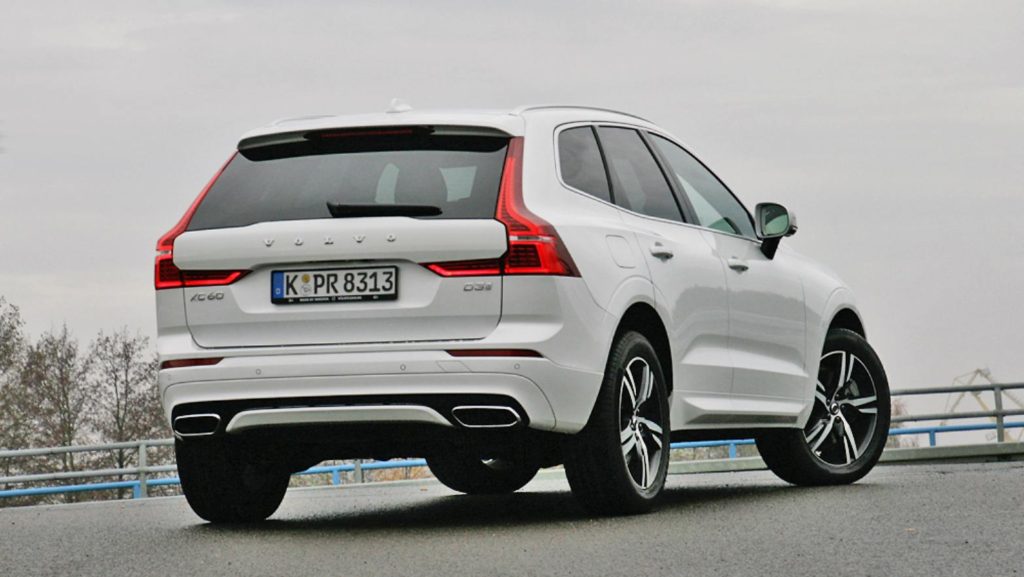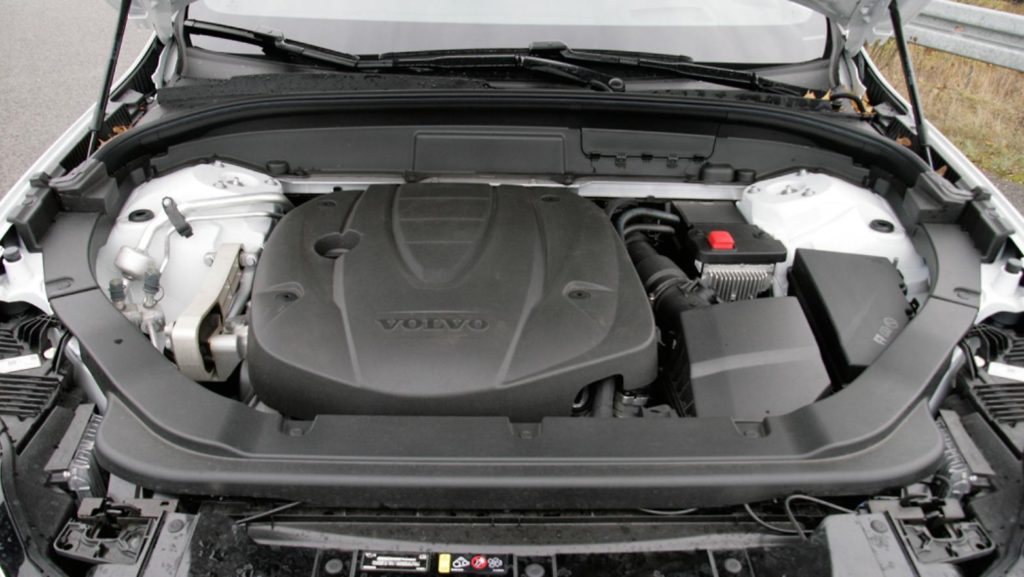It is not without risk to follow a bestseller with a new version. The Volvo XC 60 is by far the Germans favorite model of the brand. In the n-tv.de practice test, the Swedish snack shows why many find it so delicious.
Almost every third new Volvo registered in Germany in 2018 was an XC 60. None of the other models offered by the brand in this country achieved even half the sales of the medium-sized SUV. A hit so so, even if the Swedish manufacturer suffers from the diesel crisis together with other providers without fault. Although completely unmolested by reports of rigged diesel-engined aggregates, Volvo could not resist the pull of the scandal whirlwind. From formerly close to 90 percent diesel share through all series have now become about 66 percent.
After all, still three quarters of customers swear by the XC 60 on the diesel. Consequently, in this test, the two-liter diesel with the abbreviation “D3” was used, which can prepare 150 hp by means of a monoturbo and variable turbine geometry. It is doubtful whether this engine still gets a successor generation, as CEO Hakan Samuelsson has already announced the exit Volvo from diesel technology. Meanwhile, a plug-in hybrid of the XC 60 is available, whose technology essentially corresponds to that of the big brother’s XC90 Twin Engine.
Contrary to the usual practice in other brands Volvo offers its diesel cheaper than the corresponding petrol engine, the 150-horsepower entry-level engine is coupled with a front-wheel drive. The character of a “basic model” was underpinned in the test car in that the power transmission is provided by a manual six-speed gearbox. Most of the other variants use an eight-speed Aisin automatic.
Striking light architecture
At 4.69 meters, the Volvo is three inches longer than an Audi Q5, but four inches shorter than a Jaguar F-Pace. The ground clearance of 216 millimeters should give it a certain off-road capability, however, which is then reserved for the sister models with all-wheel drive. What distinguishes the look of the new XC60 from its predecessor, the flatter and nearly horizontal bonnet, the no longer so much rising window line and the more prominent graphics of the daytime running lights, known among Volvo lovers as “Thors Hammer”. The rear lights are even more expansive than previously designed, the covers of these light sources reach up to 70 inches in height and width. For a massive appearance, Volvo has taken precautions: Instead of the 18-inch standard rims, wheels up to 21 inches in diameter can be ordered. If you order the “R-Design” of the test car, you get a 19-inch model.

In the interior there is a tidy atmosphere characterized by the cool objectivity of Nordic charm. The seats are taken over by the XC90, are comfortable and versatile electrically adjustable, but not as stable as the side cheeks promised. The strong inclination of the windshield can lead to disturbing reflect even dark fittings covers in the glass under certain incidence of light. On the edge-mounted control touchscreen for navigation, communication and entertainment systems, individual keys have been enlarged for better usability. However, this does not absolve Volvo newbies from the task of acquiring the horizontal and vertical staggered functions by trial and error, because the searched person does not always sit where one thinks he is.
The term “Swedish steel” is not only a synonym for robustness and durability, but also for above-average weight. Although the Volvo test car was richly equipped, it was not possible to attest to the overrun of the empty-weight specification that was frequently detectable in similar tests. A lightweight is the XC 60 with its 1920 kg empty mass, of course, not.
Cargo space with lush interior width
The use of the scalable vehicle platform has not only given the XC60 larger dimensions, but also increased occupant space. On the back seat is a decent freedom of movement, behind the rear passengers is a luggage compartment with 505 liters volume, expandable to 1432 liters. The backrests can be flat and just sink, the sill is not too high at 73 centimeters. The use of a special leaf spring made of composite ensures on the rear axle that no strut sleeves protrude into the trunk and so a continuous width of 105 centimeters can be used.
Basically, the suspension is tuned more to the comfortable side, so that the impression on the road remains very gentle and controlled. The same can be said of the steering, which strives to avoid direct contact with the ground, as if bedded in cotton. But if you want to afford an adaptive air suspension together with so-called Four-C technology (+ 2270 Euro), you will be surprised about the noticeable spread in character and feedback.

The change of the driving mode not only makes the steering noticeably firmer and the lateral inclination in sharp turns decreases, but also the throttle response changes, so that the XC60 is a good deal more spirited over. However, the power to weight ratio of 12.8 kilograms per horsepower also sets narrow limits. More thirst is practically unavoidable when using these options. Instead of the standard fuel consumption of 6.1 liters / 100 km, which was determined according to WLTP, this test drive averaged 7.5 liters.
No shortage of expensive options
Volvo’s self-image is “premium” and in terms of technology, material selection and processing, the Swedes need not hide behind the German trio. Also not in the pricing. Currently calculated for the XC 60 with basic diesel and front-wheel drive 45,550 euros. Those who find this expensive should not forget that, for example, assistants such as traffic sign recognition, automatic lane keeping incl. Steering intervention, hill-and-run assistance, LED headlights, collision avoidance including pedestrian, cyclist and wild animal detection as well as infotainment system, WLAN Hotspot, leather sports seats and rain sensor are included.
But the list of possible options is long, that of the packages also: For 1900 Euro you put together CD player, navigation system and a sound system by Harman / Kardon, for 3000 euros extra the dashboard in leather look, the head-up display and the movable panoramic glass roof. Luggage compartment separation net, automatic tailgate, keyless drive and electrically convertible rear seat backs are to be reimbursed with 1250 euros. These and other amenities drove the price of the test car to 67,020 euros. A snack in Sweden, which is not for everyone.
Conclusion: The new XC 60 is also well received by customers, as the registration numbers show. He is a chic, comfortable and versatile family and recreational vehicle with plenty of space, which is likely to be rarely ordered in the configuration of the test car. An expensive Bowers & Wilkins system, for example, can safely omit and order for 4×4 drive or a more powerful engine. This would make driving enjoyable while maintaining a high level of safety.

